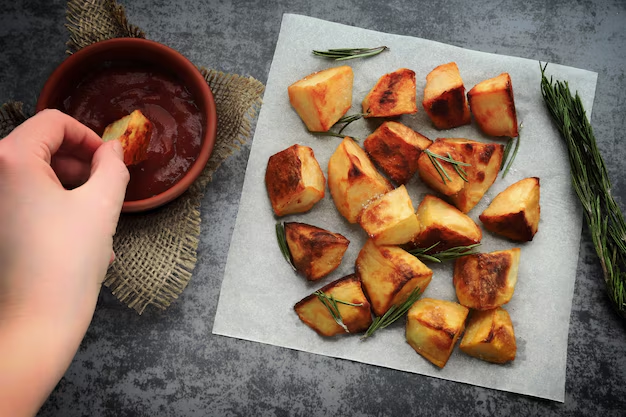Can People with Diabetes Enjoy Potatoes? Here's the Answer
Potatoes are a staple food worldwide, but for the nearly 463 million adults living with diabetes, the question of whether they can indulge in this popular carb is crucial. After all, managing blood sugar levels is a daily challenge that requires careful dietary choices. So, can those with diabetes enjoy potatoes? The short answer is yes, but with some important considerations.
Understanding Potatoes and Their Glycemic Impact
Potatoes are rich in carbohydrates, which break down into glucose during digestion and can impact blood sugar levels. The crucial factor here is the glycemic index (GI), which measures how quickly foods cause blood glucose to rise. Potatoes, especially those cooked without fiber-rich skins, often have a high glycemic index, meaning they can cause rapid spikes in blood sugar levels.
However, not all potatoes are created equal. Sweet potatoes and carisma potatoes are on the lower end of the GI scale compared to regular white or russet potatoes. Cooking methods also play a significant role; choosing to bake or boil instead of frying can slow down glucose absorption, making it easier to manage blood sugar levels.
Tips for Including Potatoes in a Diabetic Diet
- Portion Control: Keep portion sizes small to moderate. A typical serving should be about half a cup or one small potato.
- Pair with Fiber and Protein: Adding fiber-rich vegetables and a lean protein to your meal can slow down digestion and glucose absorption.
- Choose Smart Preparation Methods: Opt for roasted, baked, or boiled potatoes over fried. This reduces added fats and keeps the meal healthier.
- Go for Skin-On Potatoes: Many nutrients and fibers are within the potato skin, helping lower the meal's overall glycemic effect.
- Experiment with Low-GI Varieties: Explore lower GI options like sweet potatoes and carisma potatoes.
Navigating Dietary Choices with Financial Considerations
Healthy eating can often feel more expensive, but did you know there are resources to help maintain a diabetes-friendly diet without breaking the bank? Understanding where to find support can make managing diabetes a little easier.
Programs and Resources to Consider
- 💳 SNAP Benefits: The Supplemental Nutrition Assistance Program (SNAP) helps low-income individuals and families buy healthy food. Consider checking eligibility to improve access to nutritious options like low-GI potatoes.
- 🏥 Medicare and Medicaid Support: These programs may offer additional resources for those with diabetes, including nutritional therapy options.
- 📚 USDA Food and Nutrition Service: Provides guidance and support for individuals needing food assistance.
Living with diabetes involves making smart lifestyle choices, and potatoes can be part of a healthy diet with careful planning. Pairing smart nutritional strategies with available financial resources ensures that you can manage your health without the burden of extra costs. Whether you're adjusting your potato consumption or exploring grocery assistance, understanding your options is key to maintaining both your physical and financial well-being.
| 🔍 Resource | 📋 What It Offers |
|---|---|
| 💳 SNAP Benefits | Assistance for buying nutritious food for low-income individuals and families. |
| 🏥 Medicare & Medicaid Support | Coverage and resources for diabetic education and nutrition therapy. |
| 📚 USDA Food and Nutrition Service | Information and support for accessing food assistance programs. |
